What is software development, and what do you need to know about software before you start building it?
First, let’s explore the concept of software development—what it is, what some common software types and components are, and which hosting options are available for you.
Software development explained
Software development is the process of designing, coding, documenting, testing, and maintaining applications, frameworks, or other software deliverables to solve specific problems or fulfill particular needs. It involves a combination of methodologies, tools, and practices to create reliable, efficient, and user-friendly systems.
Software solutions are multi-component by nature
A software solution relies on the following components:
Front end
Front-end development focuses on the user-facing side of a software solution and aims to maximize usability and user experience. It focuses on the design elements visible on the browser screen, such as colors, buttons, text style, and navigation. A front-end developer, working alongside a UI/UX specialist, ensures that users have a pleasant experience navigating the application and can easily find what they are looking for.
Typical front-end programming languages include JavaScript, CSS, and HTML wrapped in libraries, such as React, Angular, etc.
Back end
Back-end development deals with the server side of a software solution, builds its functionality and logic, and takes care of data aggregation, processing, and storage. Back-end developers are responsible for implementing operations, application programming interfaces (APIs), and databases. The back-end part, as the name suggests, remains behind the scenes, and it’s invisible to the users.
Some typical back-end programming languages include but are not limited to Java, PHP, and Python.
Hardware
You always need hardware, as applications run on it. The term “hardware” refers to the physical components of a system, which can range from everyday devices like computers, smartphones, and smartwatches to specialized equipment in cyber-physical systems. Your software solution will use processing hardware, storage, input/output devices, etc.
If you are building a solution for a cyber-physical system that uses connected devices to accomplish its task, you will have to buy or build its hardware components. For example, an application that monitors food waste in restaurants consists of a software solution as well as an electronic weighing scale and a camera.
Keep in mind that some devices are rather hard to connect, and it can take several months to write driver software that can link them. In one of our projects, we needed a custom USB camera to operate on the Android operating system. This manufacturer didn’t supply the associated driver software, and we dedicated a programmer to write it from scratch for this purpose. It took them five months to accomplish the task.
There are four types of software
Understanding software types is a vital part of mastering software development basics. These include:
-
System software. It serves as the foundation of a computer or other device, managing hardware and providing a platform on which application software can run. Such software may include operating systems and device drivers. Windows, macOS, and Linux are all examples of system software.
-
Application software. In the realm of software development basics, application software interacts with users directly and enables them to perform specific tasks, ranging from productivity to communication and entertainment. Examples include word processors, spreadsheets, and video editing tools.
-
Programming software. Such software provides developers with the tools to create, edit, debug, and maintain other applications. These tools translate code written in high-level languages into machine-readable formats. Programming software includes compilers, text editors, integrated development environments (IDEs) like Visual Studio or Eclipse, and more.
-
Embedded Software. Embedded software controls specific hardware components and systems that are not considered computers and often operate under real-time constraints. You can find this software in cars, home appliances, and medical equipment.
Software can be hosted in the cloud or on premises
In the context of software development basics, understanding hosting options is crucial, as this will affect the implementation budget, total cost of ownership, security, and accessibility of your solutions. You can host your software in the cloud or on premises. The on-premises option introduces significant initial software development costs, while with the cloud, you only pay for the computing resources you consume. You can also combine the two approaches to benefit from them both.
Cloud hosting
All the infrastructure is hosted in the cloud and off the premises of your organization. There is no need to make large upfront investments in infrastructure and maintain it on site. You just find a cloud provider and “rent” resources, such as storage and computing power. You pay as you go, based on your actual consumption, reducing the initial software development cost. If you want to scale, you request more resources, which will increase the payment while giving you the possibility to expand relatively fast.
Cloud vendors are also responsible for their product’s security and reliability. They hire highly qualified cybersecurity and performance optimization experts and take care of backups and disaster recovery. If you’re looking to adopt cloud computing in healthcare or another strictly regulated sector, you can search for a compliant cloud provider who is familiar with the specifics of your industry.
On-premise hosting
With this hosting option, your organization will acquire, install, and maintain the infrastructure needed to run the software product, including storage systems. This approach incurs a higher total software cost because you must set up and manage the infrastructure. You will also require physical space to install the components.
Hosting on premises will make it challenging to scale in the future. However, you will not be reliant on internet connectivity because you can access all resources locally, which improves performance and allows for customization. This is an excellent option for businesses that handle sensitive data and prefer to keep it secure locally.
Software development basics: your development options
If you want to streamline business processes with software or launch a customer-facing application, you do not always have to start from scratch and pay the high costs associated with custom software development.
Actually, you’ve got four software development options to choose from:
-
Procure and customize a software-as-a-service (SaaS) solution
-
Create an app using no-code/low-code development platforms
-
Build an app based on pre-packaged software development libraries and SDKs
-
And, finally, develop a bespoke software solution from the ground up
Let’s see how these options stack up against each other and when you should pursue them.
Software as a service (SaaS)
SaaS development focuses on creating applications that run on cloud infrastructure. You only pay for the resources you consume without making large upfront investments. There is no need to install, configure, and maintain software locally, and everyone can access the application through the Internet.
SaaS tools allow you to build software fast, but they might not be able to cover all your needs or give your application a unique appearance. For example, you can set up a patient engagement portal using Wix or HubSpot in a matter of days. However, the licensing fees can be high, customization options will be rather limited, and the selected SaaS tool might lack some modules, such as supply chain management, that you will still have to build from scratch, which will impact your software development pricing.
No-code/low-code development
No-code/low-code approach differs from high-code (or traditional) development, as it doesn’t require coding experience.
No-code platforms provide a visual development environment in which users with no technical background can create simple apps by dragging and dropping UI elements onto the development canvas. However, this development method is only suitable for applications with limited scope. Customization options will be limited, and legacy systems will not be supported. This approach helps non-technical users create prototypes to convey their product vision to the technical personnel. It’s also possible to build full-blown applications for a relatively small audience.
Low-code development is the middle ground between no-code and traditional development. You can create a basic application using visual elements, but you can also customize and add complex functionality by accessing the source code. As a rule, low-code platform vendors provide extensive documentation and tutorials.
Pre-packaged libraries and development frameworks
A library is a collection of pre-written code designed to solve specific problems or provide reusable functionality, such as user authentication, data processing, or establishing a connection with a server. Developers utilize libraries to incorporate additional features into their applications, thereby minimizing the time and expenses associated with software development.
A framework, on the other hand, provides a structured foundation for building applications. While libraries offer specific functions that developers can call as needed, frameworks define a skeleton or architecture for the application and dictate how different components should interact. For example, frameworks like Angular (for front-end development) or Django (for back-end development) provide built-in tools and patterns that streamline software development while encouraging consistency and best practices.
Incorporating existing libraries and frameworks decreases the time and effort needed to build software applications. However, they are third-party components created by external developers or organizations, and they might introduce security vulnerabilities if not properly vetted and tested. It is essential to assess these components for quality, security, and compatibility with your project requirements. Additionally, over-reliance on frameworks or libraries can sometimes lead to challenges in customization and performance, so developers must balance convenience with flexibility.
Custom development from scratch
In this software development approach, an application is created from the ground up and completely customized to meet the needs of the business. One example of this method is to create an online banking app that is tailored to the needs of a particular bank and its customers. This is a time-consuming method with a higher cost of software development, but the resulting solution is more likely to be reliable and satisfy customers because it is tailored to their specific requirements.
Approaches to software development
Selecting the right approach is crucial for the success of your software development project. Below are four prominent project management methodologies—Waterfall, Agile, Spiral, and Rapid Application Development (RAD)—as well as DevOps, a delivery-focused approach that complements these methodologies.
| Benefits | Drawbacks | Primary use cases | |
|---|---|---|---|
| Waterfall |
|
|
Projects with well-defined requirements and critical documentation needs, such as governmental contracts |
| Agile |
|
|
Dynamic projects, like mobile app development |
| Spiral |
|
|
Complex, high-risk projects, such as aerospace systems |
| RAD |
|
|
Projects with tight deadlines and active user input, such as proof-of-concept software |
| DevOps |
|
|
Projects with frequent updates where scalability and automation are important |
Waterfall model
The Waterfall model is a linear and sequential process that progresses through separate phases—requirements gathering, design, implementation, testing, deployment, and maintenance. The development team must complete each phase before the next begins and maintain thorough documentation. This model is straightforward and relies on a rigid structure, making it easy to understand and implement. The outcome of each phase serves as input for the next, creating a clear project roadmap.
Advantages:
-
Clear structure and defined stages
-
Easy to manage due to rigidity
-
Well-documented phases and deliverables
Disadvantages:
-
Inflexible to changes once development begins
-
Late-stage testing increases the risk of costly errors
-
Limited stakeholder feedback during the process
Waterfall works well for projects with well-defined, stable requirements where documentation and strict processes are critical, such as government contracts or construction software.
Agile development
This is an iterative, incremental approach that emphasizes collaboration, stakeholder feedback analysis, and flexibility. Development teams work in short cycles called sprints, enabling continuous delivery of functional software. Agile encourages cross-functional team collaboration and places strong importance on customer satisfaction through frequent deliveries. Teams work closely with stakeholders to refine requirements and re-establish priorities, ensuring alignment with business goals.
Advantages:
-
Highly adaptable to changing requirements
-
Continuous delivery that ensures regular feedback
-
Encourages collaboration and teamwork
-
Any stage can be tested
Disadvantages:
-
Requires close involvement of stakeholders
-
Less predictability in scope and timeline
-
Needs experienced team members for effective implementation
Agile methodology suits dynamic projects with evolving requirements, like AI app development. This model is also often used by emerging technology startups.
Refer to our Waterfall vs. Agile guide to grasp the difference between the two approaches.
DevOps
DevOps is considered a further improvement on Agile. It integrates the development (Dev) and operations (Ops) teams to automate workflows and prioritize collaboration and stakeholder involvement, focusing on rapid, reliable, and frequent releases. By automating repetitive tasks like testing and deployment, DevOps reduces human error and speeds up the delivery pipeline.
You can learn more from our comprehensive guide on how to implement DevOps.
Advantages:
-
Faster time-to-market with automated deployments
-
Improves collaboration between teams
-
Enhances system reliability through continuous testing and monitoring
Disadvantages:
-
Initial setup can be complex and resource-intensive
-
Demands dedicated infrastructure and toolsets
This approach is a great fit for organizations emphasizing scalability and automation and for solutions with frequent updates, such as eCommerce platforms.
Spiral model
The Spiral model is iterative with a strong emphasis on risk analysis, and it operates in cycles. Each cycle involves planning, risk assessment, engineering, and evaluation, making it highly adaptive yet very thorough. This approach focuses on early identification and mitigation of risks, reducing chances of costly mistakes later.
Advantages:
-
Reduces potential failures due to proactive risk management
-
Accommodates evolving requirements
Disadvantages:
-
Can be expensive and time-consuming
-
Requires skilled risk analysis experts
The Spiral model is ideal for complex, high-risk projects like aerospace systems, defense software, or enterprise-level applications.
Rapid application development (RAD)
RAD ensures rapid prototyping and iterative feedback, prioritizing speed and user involvement. It delivers functional prototypes early and refines them based on stakeholder input. This approach is similar to Agile, but it minimizes planning time and focuses on adaptive design, allowing teams to pivot as needed.
Advantages:
-
Accelerated development timelines
-
Active stakeholder involvement
Disadvantages:
-
Less focus on scalability and long-term maintainability
-
Needs dedicated, skilled resources for fast iteration
Works best for projects with tight deadlines and active user input, such as marketing applications and proof-of-concept software for startups to attract investors at early stages.
Software development stages—from mockups to a full-blown solution
The process of creating an application, whether through preconfigured components or from scratch, involves several stages. Let’s explore them.
Mockups and clickable prototypes
A clickable prototype is an interactive representation of an application’s interface design. It simulates user interactions, allowing users to click on elements to navigate through different screens or user flows. Clickable prototypes often include key features and design elements, making them a valuable tool for testing the usability, layout, and navigation of a solution. They are typically used to gather user feedback and refine the design before development begins.
In contrast, mockups are static visual drafts of a software solution. Designers use mockups to experiment with visual elements like colors, typography, and layout, focusing on the aesthetic aspects of the interface. Multiple mockups can be created to explore different styles or concepts and present options to stakeholders. Unlike clickable prototypes, mockups lack interactivity and are primarily used to convey the visual design rather than the user experience.
Proof of concept (PoC)
A proof of concept is a small activity performed internally to validate the project’s idea, prove its potential, and demonstrate its viability.
The purpose of a proof-of-concept is to demonstrate whether it is possible to develop the required functionality in the real world while also revealing any roadblocks that may arise. It also shows which technologies and budget you will need to build a full-fledged product. This phase is more about the idea rather than the actual product.
Minimum viable product (MVP)
A minimum viable product is an early product version that implements all its core features. It’s good enough to be released to the market and elicit feedback from early adopters. The development team can use this feedback to further improve the solution.
Full-blown solution
This is the final software product with all its features and functionality. However, the software development process doesn’t end with the solution rollout. You may still need to maintain the software, gradually add new features, issue updates, and scale the system as your user base grows.
To conclude: additional references on the basics of software development
Understanding software development basics is the cornerstone of transforming innovative ideas into functional, impactful applications. And navigating this process doesn’t have to be daunting. That’s where our expertise comes in.
ITRex specializes in turning ideas into reality, offering end-to-end software development services tailored to your unique needs. Whether you’re testing a hypothesis, building an MVP, or implementing a full-scale, custom solution for your business, our experienced team can support you through every stage.
In the meantime, check out our blog for more software development tips. We’ve selected this reading list:












